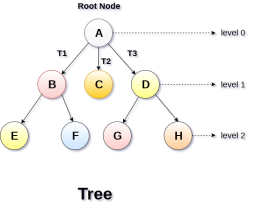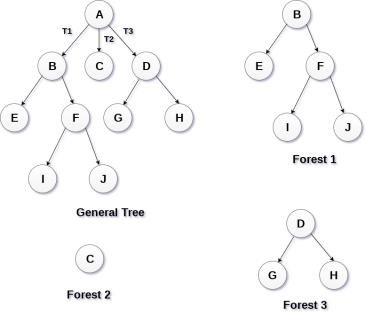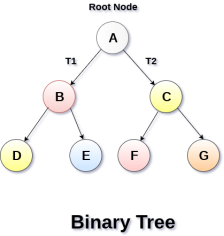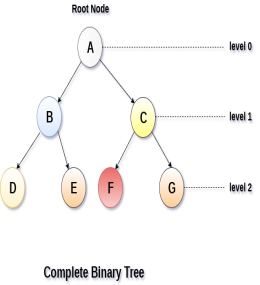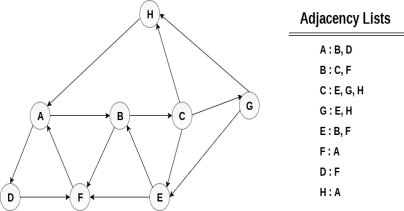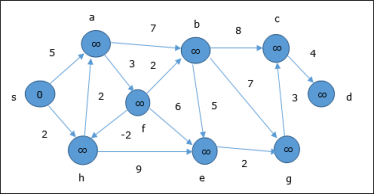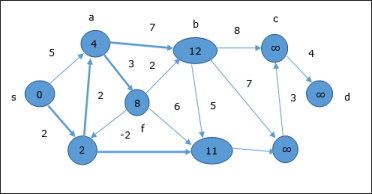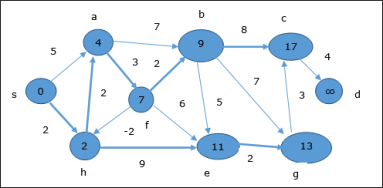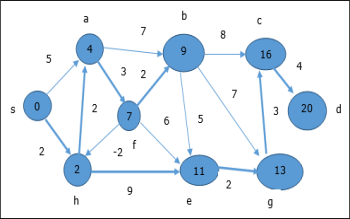|
|
|
|
|
|
|
|
SN | Traversal | Description |
1 | Pre-order Traversal | Traverse the root first then traverse into the left sub-tree and right sub-tree respectively. This procedure will be applied to each sub-tree of the tree recursively. |
2 | In-order Traversal | Traverse the left sub-tree first, and then traverse the root and the right sub-tree respectively. This procedure will be applied to each sub-tree of the tree recursively. |
3 | Post-order Traversal | Traverse the left sub-tree and then traverse the right sub-tree and root respectively. This procedure will be applied to each sub-tree of the tree recursively. |
|
|
|
#include<bits/stdc++.h> using namespace std;
// An expression tree node struct et { char value; et* left, *right; };
// A utility function to check if 'c' // is an operator bool isOperator(char c) { if (c == '+' || c == '-' || c == '*' || c == '/' || c == '^') return true; return false; }
// Utility function to do inorder traversal void inorder(et *t) { if(t) { inorder(t->left); printf("%c ", t->value); inorder(t->right); } }
// A utility function to create a new node et* newNode(char v) { et *temp = new et; temp->left = temp->right = NULL; temp->value = v; return temp; };
// Returns root of constructed tree for given // postfix expression et* constructTree(char postfix[]) { stack<et *> st; et *t, *t1, *t2;
// Traverse through every character of // input expression for (int i=0; i<strlen(postfix); i++) { // If operand, simply push into stack if (!isOperator(postfix[i])) { t = newNode(postfix[i]); st.push(t); } else // operator { t = newNode(postfix[i]);
// Pop two top nodes t1 = st.top(); // Store top st.pop(); // Remove top t2 = st.top(); st.pop();
// make them children t->right = t1; t->left = t2;
// Add this subexpression to stack st.push(t); } }
// only element will be root of expression // tree t = st.top(); st.pop();
return t; } // Driver program to test above int main() { char postfix[] = "ab+ef*g*-"; et* r = constructTree(postfix); printf("infix expression is \n"); inorder(r); return 0; }
|
STATUS = 2 (waiting state)
[END OF LOOP]
|
BFS | DFS |
BFS finds the shortest path to the destination. | DFS goes to the bottom of a subtree, then backtracks. |
The full form of BFS is Breadth-First Search. | The full form of DFS is Depth First Search. |
It uses a queue to keep track of the next location to visit. | It uses a stack to keep track of the next location to visit. |
BFS traverses according to tree level. | DFS traverses according to tree depth. |
It is implemented using FIFO list. | It is implemented using LIFO list. |
It requires more memory as compare to DFS. | It requires less memory as compare to BFS. |
This algorithm gives the shallowest path solution. | This algorithm doesn't guarantee the shallowest path solution. |
There is no need of backtracking in BFS. | There is a need of backtracking in DFS. |
You can never be trapped into finite loops. | You can be trapped into infinite loops. |
If you do not find any goal, you may need to expand many nodes before the solution is found. | If you do not find any goal, the leaf node backtracking may occur. |
In the first step, all the vertices which are reachable from the source are updated by minimum cost. Hence, vertices a and h are updated.
In the next step, vertices a, b, f and e are updated.
Following the same logic, in this step vertices b, f, c and g are updated.
Here, vertices c and d are updated.
|
